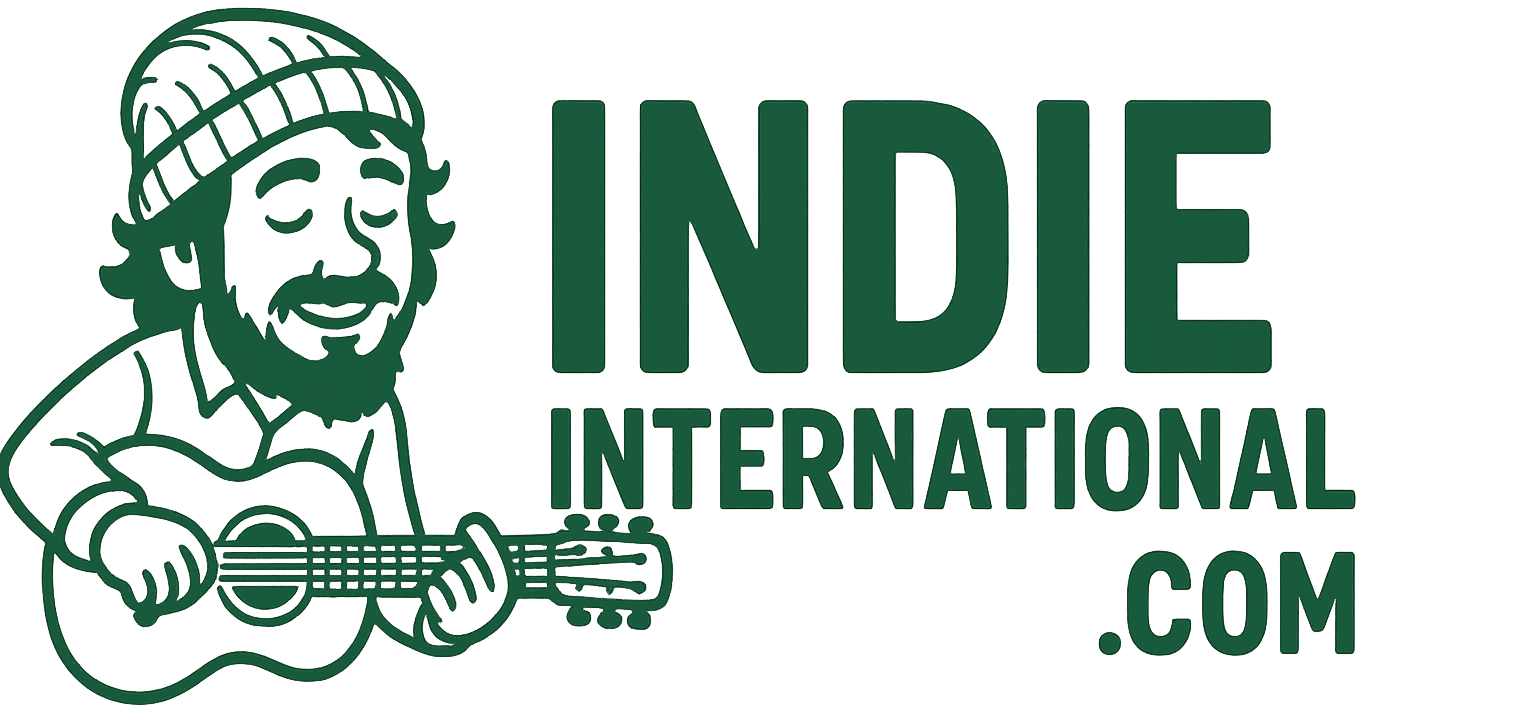Templates have been one of the most valuable tools I’ve added to my songwriting process. They give me a starting point, help me avoid wasting time, and make sure no important details slip through the cracks. While songwriting will always be a deeply personal and creative process, having structured guides to work with can speed things up and keep ideas organized.
I’ve used many different approaches over the years , from messy notebooks to digital project sheets , but I’ve found that a good songwriting template can bridge the gap between inspiration and a finished piece of music. It’s not about replacing creativity with formulas; it’s about having a framework that supports it. In this guide, I’ll walk you through different kinds of free songwriting templates you should try, how I use them, and how they can help you finish more songs.
Why Templates Work for Songwriters
Some people resist templates because they fear being boxed in creatively. But I’ve discovered the opposite. A template can free you from worrying about structure so you can focus on the emotional and melodic core of your song.
With a blank page, it’s easy to get stuck wondering where to start. A template gives you clear sections to fill in, prompts to spark ideas, and an overall structure that keeps you moving forward. Whether you’re writing lyrics, arranging chords, or planning a full production, a template can act as a creative safety net.
Basic Lyric Writing Templates
One of the simplest and most useful free songwriting templates you should try is a basic lyric sheet layout. This typically has space for the song title, key, tempo, and then sections labeled verse, chorus, bridge, and so on. It might seem basic, but having a consistent format for all your lyric drafts makes it easier to revisit and refine ideas later.
I keep a digital lyric sheet template in my notes app and also have a printed version in a binder. That way, whether I’m working on my laptop or just scribbling ideas with a pen, I can capture them in a consistent way.
Chord Progression Templates
Sometimes the hardest part of songwriting is figuring out where to start musically. That’s where chord progression templates come in. These are pre-made sheets with common progressions for different genres, moods, or tempos.
I don’t use them to copy songs; instead, I use them to spark new ideas. If I’m stuck, I’ll pick a progression from the sheet, play it through a few times, and see what melodies or lyric ideas emerge. Having these progressions at my fingertips saves time and keeps me from staring at my instrument in frustration.
Song Structure Templates
A song structure template outlines the order and arrangement of sections like intro, verse, chorus, bridge, and outro. It’s especially useful for beginners, but even experienced writers benefit from a visual reminder of how a song flows.
I have a few variations depending on the style I’m writing. For pop songs, I might use a template that emphasizes catchy hooks and repeated choruses. For storytelling folk songs, I might lean on a structure that allows for longer verses and evolving narratives.
Melody Development Templates
Melodies can feel elusive, but a melody development template can help break them down into manageable steps. These templates often include prompts for identifying the song’s key, scale, and melodic range, as well as space for notating or describing your melody lines.
I use these when I want to be more intentional about my melodic choices. Rather than relying entirely on instinct, I can experiment with variations and see which version feels best for the mood I’m aiming for.
Recording Session Templates
Even if you’re not making a final mix, recording demos is part of most songwriters’ workflows. A recording session template can help keep track of takes, track names, microphone setups, and notes on performance.
I have a simple spreadsheet for this purpose, and it’s been a game-changer. Instead of wondering which take had the best vocal delivery or forgetting which guitar tone I liked, I can check my notes instantly.
Collaboration Templates
When co-writing, organization becomes even more important. A collaboration template can include shared lyric sheets, track lists, and progress trackers so everyone is on the same page.
I often use a cloud-based document for co-writing sessions. It keeps all our notes, audio links, and feedback in one place, which prevents confusion and saves time. Everyone involved can add to it in real time, making the process much smoother.
Daily Songwriting Journal Templates
Another of the free songwriting templates you should try is a daily journal format. This isn’t just for finished songs , it’s for building the habit of writing regularly. A good journal template might include prompts for describing your mood, noting song ideas, and setting creative goals for the day.
I use mine to jot down random lines, record fleeting melodic ideas, or note interesting phrases I’ve overheard. Even if I don’t write a full song that day, the journal keeps me engaged with my craft.
Lyric Brainstorming Templates
Sometimes you know the general theme you want to write about but don’t have the exact words. A lyric brainstorming template can help. These often have sections for related words, rhymes, metaphors, and sensory details.
I find them especially useful when I want to push past clichés. By exploring different angles and associations on paper, I can discover unexpected ways to express my ideas.
Hook and Chorus Templates
The chorus is often the most memorable part of a song, and writing one that sticks can be challenging. A hook and chorus template might include space for brainstorming multiple hook ideas, testing them against different chord progressions, and refining the strongest ones.
I use this type of template when I want to focus entirely on making the centerpiece of my song as strong as possible before building the verses around it.
Storytelling Templates
For narrative-driven songs, a storytelling template can be incredibly helpful. These might include prompts for setting, characters, conflict, and resolution.
When I’m writing folk or country songs, I use storytelling templates to map out the narrative arc. This ensures the song feels complete and emotionally satisfying from start to finish.
Arrangement Templates
Once the core song is written, arrangement templates help decide how instruments and vocals will interact. They might include sections for noting which instruments enter at different points, dynamics, and layering choices.
I’ve used arrangement templates to plan everything from minimal acoustic tracks to full band arrangements. Having it on paper makes recording sessions more efficient.
Genre-Specific Templates
Different genres often have their own quirks in structure, instrumentation, and lyrical style. Genre-specific templates take these into account. For example, a hip-hop template might focus more on beat patterns and rhyme schemes, while a ballad template might prioritize chord changes and emotional build.
I like having a few genre-specific templates ready for whenever I want to step outside my usual style.
Adapting Templates to Your Style
While I recommend starting with pre-made free songwriting templates you should try, it’s just as important to customize them over time. Every songwriter works differently, and a template that fits my workflow might not fit yours perfectly.
I’ve tweaked my templates many times , adding sections I need, removing ones I never use, and rearranging layouts so they match how my brain processes music.
Keeping Templates Accessible
The best template in the world won’t help if you can’t find it quickly when inspiration strikes. I keep mine organized in a dedicated folder on my phone and computer. I also print a few and keep them in my songwriting bag so I can work without relying on technology.
This way, I never have to waste time searching for the right format when I’m ready to write.
The Role of Templates in Finishing Songs
One of the biggest benefits of using templates is that they help me actually finish songs. Before I started using them, I had dozens of half-written pieces that I never revisited because the process felt too messy.
Now, when I sit down with a template, I know I’ll leave the session with something concrete , even if it’s just a rough draft. The structure makes it easier to see where the song is going and what still needs work.
Templates and Creative Freedom
Some people worry that templates will make their songs sound formulaic. I’ve found the opposite to be true. By handling the structural details for me, templates free up mental space to focus on the emotional and creative aspects.
The template doesn’t dictate what I write , it simply gives me a map so I don’t get lost along the way.
Combining Multiple Templates
Sometimes I use more than one template for a single song. For example, I might start with a lyric brainstorming template, then switch to a song structure template, and finally use an arrangement template for recording.
Combining them lets me approach the song from different angles, making the final result more polished.
Final Thoughts
Templates aren’t a replacement for creativity; they’re a tool to help you harness it. Whether you’re just starting out or have been writing songs for years, having structured formats to work from can help you capture ideas, develop them efficiently, and bring them to completion.
The free songwriting templates you should try are the ones that make your process smoother, faster, and more enjoyable. Experiment with different styles, adapt them to your needs, and see how much easier it becomes to turn inspiration into finished music.

